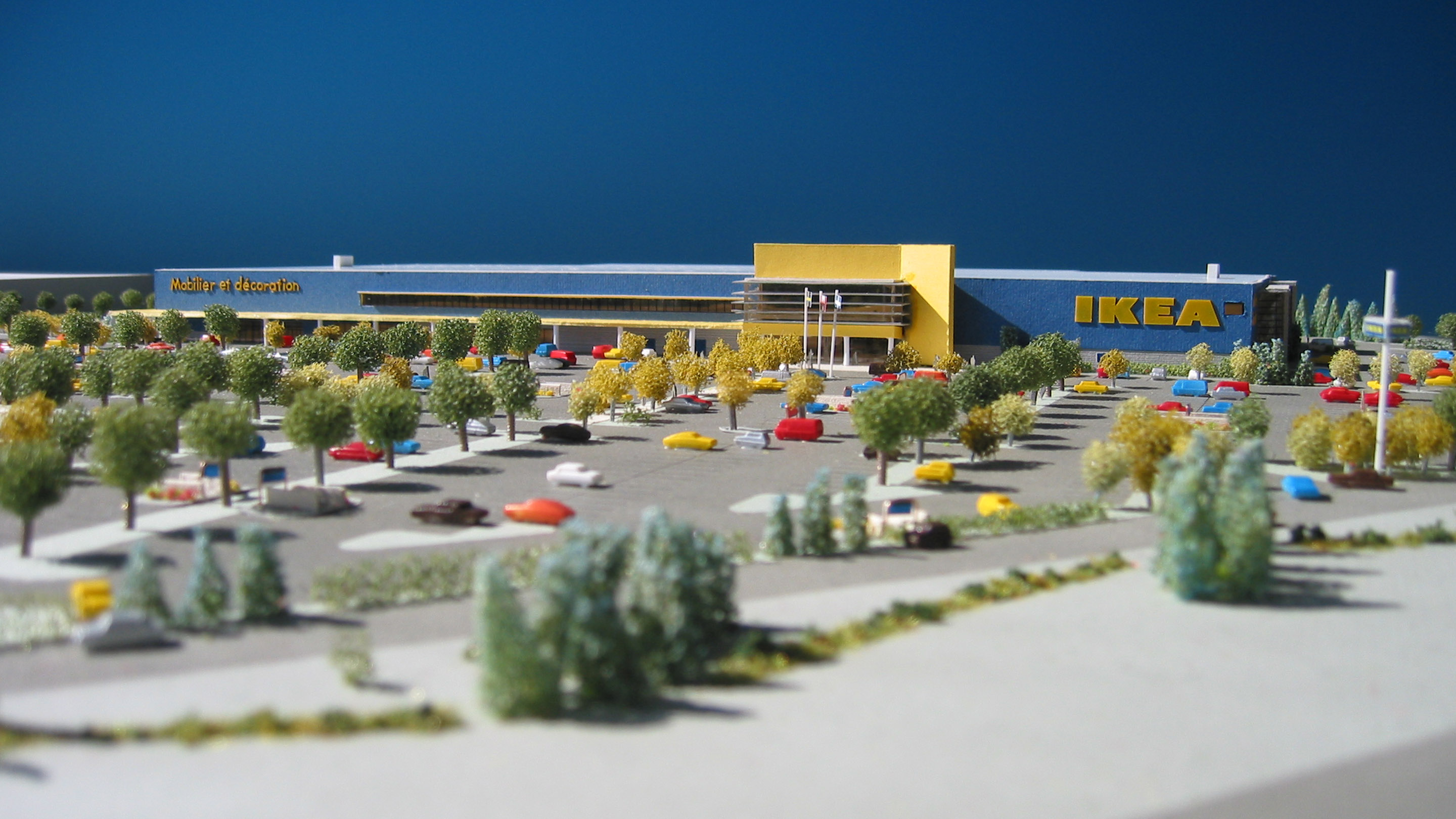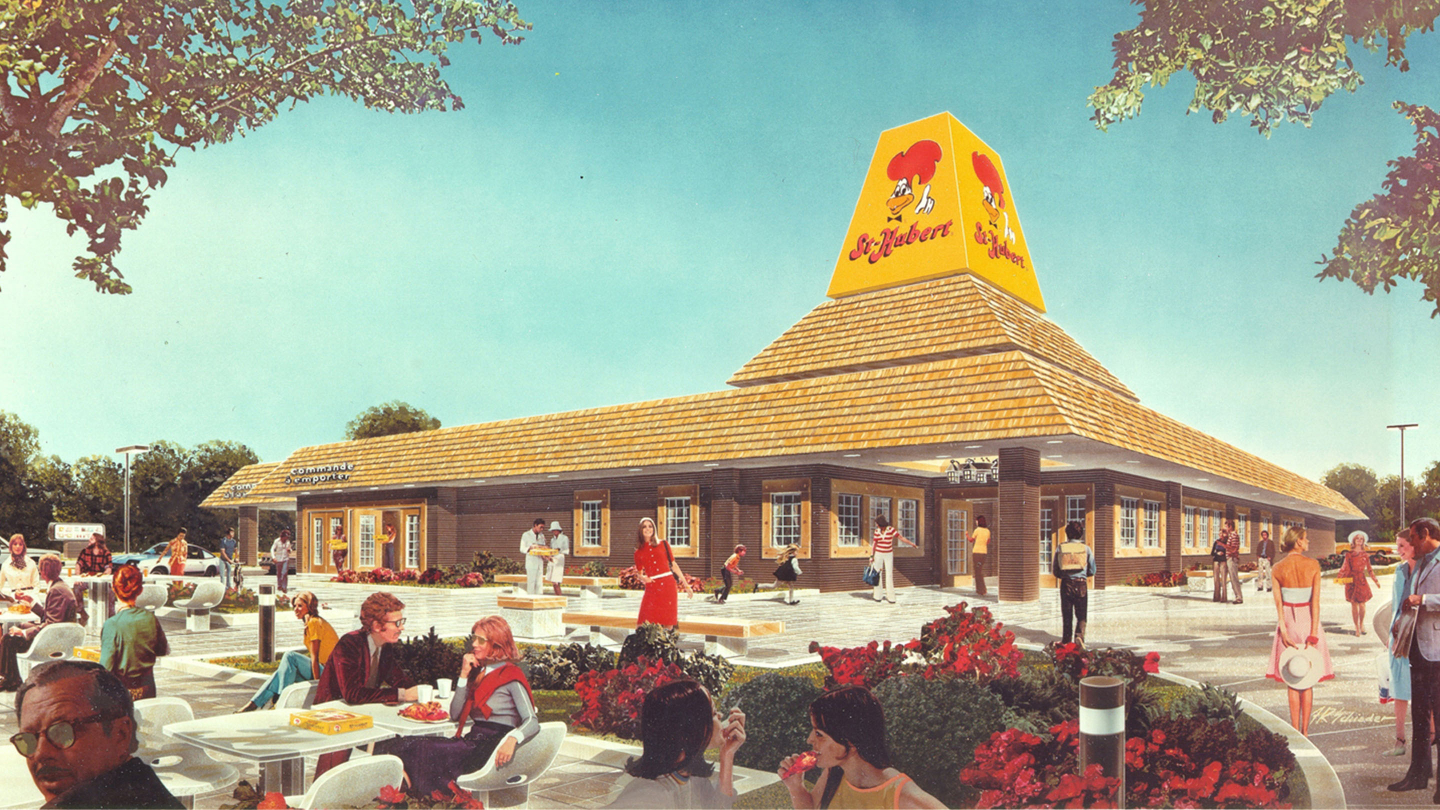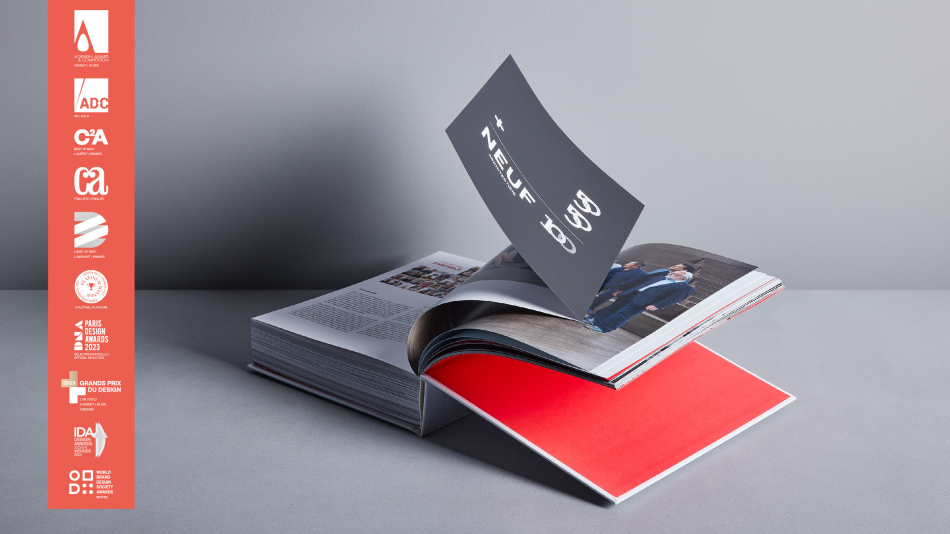This story began on Saint-Hubert Street in the 1950s. René Léger's family restaurant was so popular that twenty years after its opening, his children, Claire and Jean-Pierre, who wanted to bring the first address's friendly spirit to new locations, started a franchise. After some research, they chose Desmarais, Tornay, Pilon & Associates to develop a new brand image and a restaurant prototype that could be implemented anywhere in Quebec, or even North America.
André Cousineau and his team worked on the new architectural line of the St-Hubert Rotisseries, including the interior design and logo. The final product focused on recognisability and visibility: a stylized rooster's head inside a yellow pyramid, which sits on top of a red brick façade. By 1978, nearly 70 restaurants and 30 renovations resembled this initial prototype, which expanded quickly to become the leading rotisserie chain in Quebec. A second phase of the project, years later, refined its visual identity and integrated small, regional variations in the different locations.
One of NEUF's first forays into "mass market" architecture, the design of Rôtisseries St-Hubert laid the groundwork for subsequent projects intended for large-quantity, serial production. Similar collaborations followed: Omer DeSerres in 1990, Canada Post in 1994, IKEA in 2001, IGA in 2002 or Decathlon in 2019. These everyday structures provide the opportunity to rethink our habits as our modes of consumption, lifestyles, and technologies evolve. But most importantly, this familiar and unadorned architecture meets the regular needs of Quebecers as it invisibly and inventively makes their daily lives easier and more convenient. This understanding ensures our clients’ loyalty and our projects’ long-term success.




